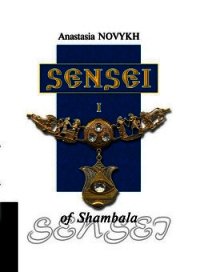Abarat: The First Book of Hours - Barker Clive (читать книги полностью без сокращений бесплатно .TXT) 📗
“What comes next, of course, is the island of Midnight, also called Gorgossium. What few observations I will offer here must be prefaced with the confession that I have never set foot on that Hour, nor have any wish to do so.
“Gorgossium is wreathed in red mists, which seem to have a serpentine life of their own. The old fortress of Iniquisit, with its thirteen towers, dominates the heights of Midnight and looks down with frightful authority on the joyless landscape below. The Carrion family has of course occupied Gorgossium since the beginning of written history, and what attributes the island that or may not possess (all this information is third or fourth hand) is their handiwork. A forest of gallows; a morbid garden that contains every harmful plant in creation; a collection of machines devised to torment and murder: all these are rumored to exist on the island.
“But these are the least. There is a great deal more, which I will not sully the pages of’ this Almenak by relating. Instead I will move on, as one might move on past a fetid cadaver, in the hope of discovering some sweeter sight.
“We are now, of course, in the very dead of night. The skies are star pricked overhead. There is a great quiet. And there is no quieter place in the Abarat than at One O’clock in the Morning, where the six Pyramids of Xuxux rise out of the dark and uncannily placid waters of the Izabella.
“Not far from here, visible across the Straits of Segunda, is the Noahic Ziggurat on Soma Plume, which I have previously described. The silhouette of the Ziggurat is of course remarkably close to that of the Xuxux Pyramids, and there are those who have suggested that all seven structures were designed by the same hand and built by the same masons. I disagree. The tombs at Soma Plume are, as I stated earlier, calm and and curiously reassuring places. The six Pyramids at Xuxux, however (perhaps owing to their proximity to Midnight), are sites of mystery and tragedy. Four of the six have been broken into and gutted by thieves, but the two largest remain unpenetrated, their locks beyond the wits of even the most ambitious master criminal. There is little doubt that they are occupied, however. Something lives and breeds in the great Pyramids; I do not claim to know what.
“Moving on to the northwest, we come to Idjit, which is (in the opinion of this explorer) an island of immense charm. I have never visited the island sober, I will admit, so my view may be somewhat influenced by that fact.
But Idjit is an island that encourages excesses, a kind of happy foolishness.
“This is at first glance an unlikely place for clowns. It shares with neighboring Gorgossium a spiky, barren topography, and storms rage perpetually about the landscape. It has been calculated that a visitor to Idjit is more likely to be struck by lightning than a man on the Roosts of Efreet is to be hit by bird excrement. I can personally testify to this, f have been struck three times while climbing the heights of the island. The experience is quite refreshing, akin to taking a plunge in icy water. Yes, it certainly takes the breath away. But when it’s over, one is left either dead or invigorated. An extreme choice, I grant you, but life untouched by such extremes would be dull indeed.
“Leaving Idjit and taking now a northeasterly course, we approach Pyon, with its instantly recognizable arch. Pyon was once a quiet island, but no longer. The work of an entrepreneur by the name of Rojo Pixler has transformed the island utterly. It was Pixler’s dream (some have said folly) to build the biggest city in the archipelago on Pyon, its lights so bright that the darkness of the Hour would be a grand irrelevance. Using funds built up through his titanically successful household products, Pixler has created his own dream city. By bringing together the genius of wizards and the skills of more conventional architects (all touched by their own genius) Pixler has not only transformed Pyon, but may eventually (and to the mind of this writer, regrettably) transform the entire archipelago. Nobody is safe from the Panacea, or from its relentlessly happy salesman, the Commexo Kid.
“Pixler’s flying machines are now venturing far from the skies over Pyon, while his burrowings beneath the seabed, where he intends to build a second city, three times the size of Commexo City, have dug through layers of rock which is filled (so I’m told by friends who are experts in their fields) with never-to-be-duplicated evidence of our earliest beginnings.
“But it is probably fair to say that a man like Rojo Pixler has no interest in the past. He looks only toward tomorrow. A life lived in perpetual expectation may be a fine thing for a time, but it’s a young man’s game. Mister Pixler has apparently yet to be touched by the shadow of his mortality. When that happens, I venture, he may be more respectful of all that lies quietly in the earth, as he will one day be its fellow.
“I apologize for such dark ruminations, but they come to me naturally when i contemplate the gaud of Commexo city. Nor is there much comfort to be discovered in the so-called Outer Islands_of which Pyon was once a member. Now there are only four in that group: The Isle of the Black Egg, Speckle Frew, Efreet and Autland. They are unquestionably the least pretty, the least charming, the least seductive of the archipelago. But that is not to say that they don’t possess a considerable degree of drama.
“At Four O’clock, on The Isle of the Black Egg, for instance, lie the Pius Mountains, a range of needle-sharp crags that are the tallest natural phenomenon in the islands. (In fact the top of Odom’s Spire, at the Twenty-Fifth Hour, is closer to Heaven. But there is nothing natural about the Spire, I would submit. It is surely the work of some less than divine architect.) The Pius Mountains, despite their inaccessibility, are not unpopulated. In the early days of the Abarat, during the Celestial Wars, guerrilla forces hid there and used their aerie as a base for devastating attacks on the fleets of the empress Deviavex. The descendants of those, rebels still have communities in Pius Heights (as they call the mountains), and there live a life of blameless and uncommon purity
“As to the black Egg, which gave the island its name, I can say only this: I have discovered to date two hundred and seventeen explanations for the name, each contradicting the next. As I cannot distinguish the value of any one explanation over any other, and it seems arbitrary to simply pick one for retelling here, I’d prefer to simply state that nobody knows how the island got its name and leave it at that.
“‘Moving on west, along the line of the Outer Islands, we come to Five O’clock, and Speckle Frew. It is geographically an uneventful island; the earth sandy and covered with fine, sharp-edged grass, the wind always howling. Though the terrain is scarcely varied, the island is home to a wide variety of species, most of them dangerous. The Naught, the Scab-Faced Snouter, the Rife all have their habitats in the undulating grasslands of Speckle Frew. Anil when ground is contested, or eggs are trampled or stolen, the ensuing battles can be brutal and bloody. In short, Speckle Frew is less an island than it is a bestiary, and it is not to be trespassed lightly.
“The next of the Outer Islands is Efreet. Unlike its neighbor, Speckle Frew, which has always been a wild spot, Efreet was once an island of great sophistication. The city of Koy, considered to have been the most cultured city in the Abarat, was built on the lower steppes of the island, which lies to the northeast. Opinions vary as to how long Koy stood, and why it fell, but what remains of the city—rows of pillars, archways, frescoes—testify to a site of elegance and learning. In recent times the ruins have become the haunt of lost and unhappy souls, and it seems impossible, visiting its mournful shores, that there was once a bright world here. Efreet’s Hour, I should add, is Six in the Morning.



